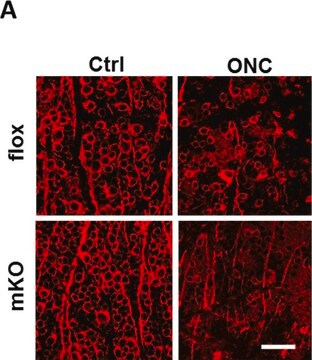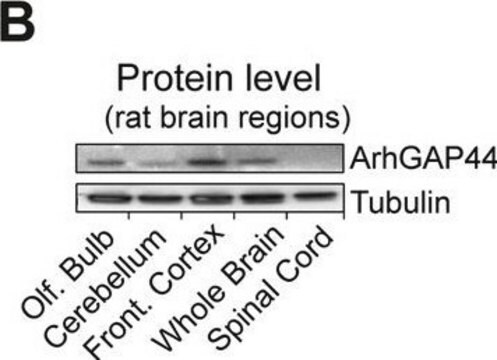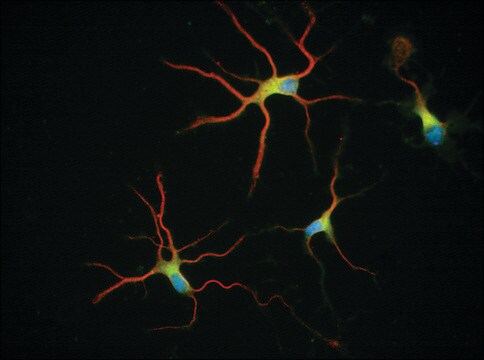AB15708
Anti-β III tubulin Antibody
Chemicon®, from rabbit
Sinónimos:
Anti-CDCBM, Anti-CFEOM3, Anti-CFEOM3A, Anti-FEOM3, Anti-TUBB4, Anti-beta-4
About This Item
Productos recomendados
origen biológico
rabbit
Nivel de calidad
forma del anticuerpo
affinity isolated antibody
tipo de anticuerpo
primary antibodies
clon
polyclonal
reactividad de especies
mouse
envase
antibody small pack of 25 μg
fabricante / nombre comercial
Chemicon®
técnicas
western blot: suitable
Nº de acceso NCBI
Nº de acceso UniProt
Condiciones de envío
ambient
temp. de almacenamiento
2-8°C
modificación del objetivo postraduccional
unmodified
Información sobre el gen
mouse ... Tubb3(22152)
Especificidad
Inmunógeno
Aplicación
Neuroscience
Neuronal & Glial Markers
Neurofilament & Neuron Metabolism
Optimal working dilutions must be determined by end user.
Calidad
Forma física
Almacenamiento y estabilidad
Otras notas
Información legal
Cláusula de descargo de responsabilidad
¿No encuentra el producto adecuado?
Pruebe nuestro Herramienta de selección de productos.
Opcional
Código de clase de almacenamiento
12 - Non Combustible Liquids
Clase de riesgo para el agua (WGK)
WGK 2
Punto de inflamabilidad (°F)
Not applicable
Punto de inflamabilidad (°C)
Not applicable
Certificados de análisis (COA)
Busque Certificados de análisis (COA) introduciendo el número de lote del producto. Los números de lote se encuentran en la etiqueta del producto después de las palabras «Lot» o «Batch»
¿Ya tiene este producto?
Encuentre la documentación para los productos que ha comprado recientemente en la Biblioteca de documentos.
Artículos
Human iPSC neural differentiation media and protocols used to generate neural stem cells, neurons and glial cell types.
Nuestro equipo de científicos tiene experiencia en todas las áreas de investigación: Ciencias de la vida, Ciencia de los materiales, Síntesis química, Cromatografía, Analítica y muchas otras.
Póngase en contacto con el Servicio técnico





